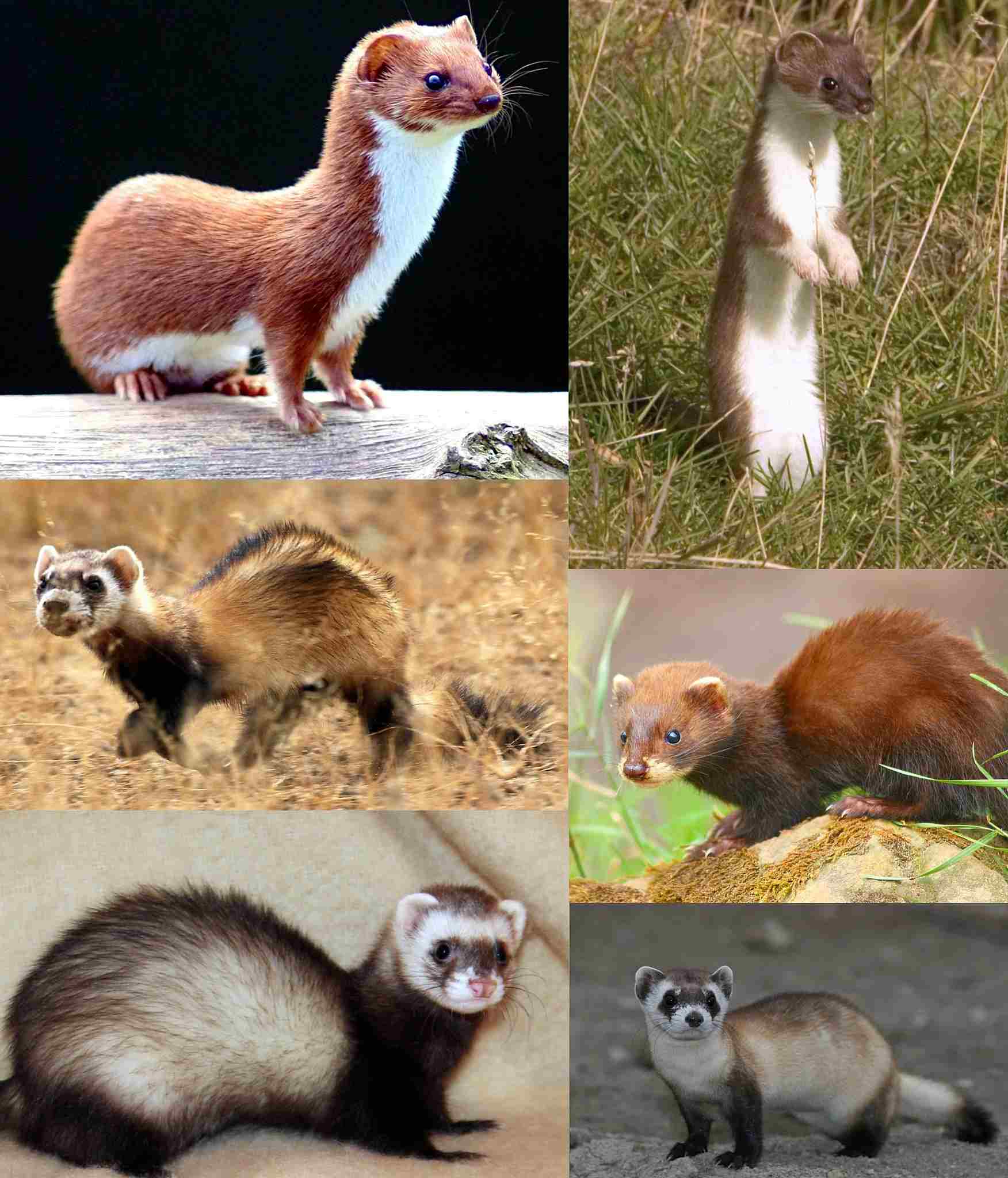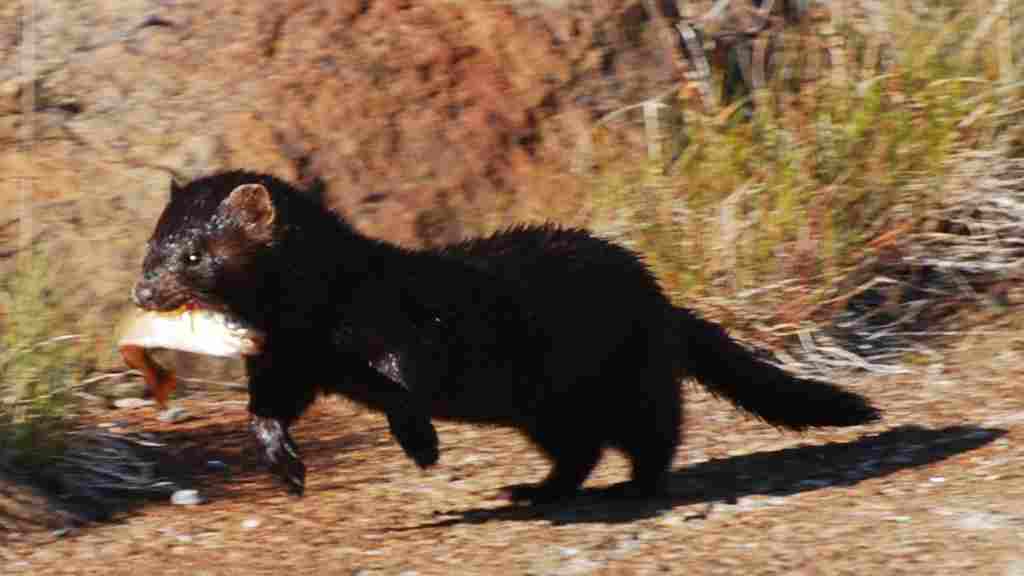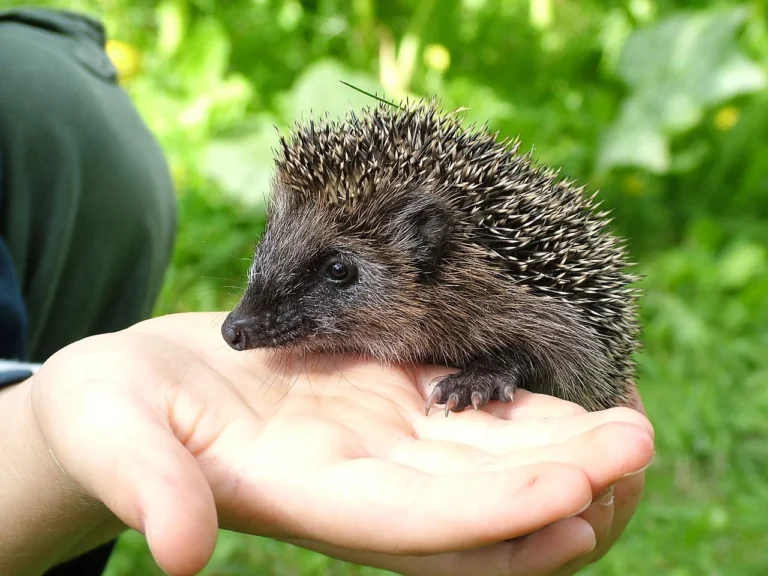Marten Vs Weasel Size, Weight, Overall Comparison
In a hypothetical encounter between a marten and a weasel, two members of the weasel family, we delve into the potential dynamics of this confrontation. Martens, characterized by their significantly larger size, greater weight, and strength compared to both weasels and minks, also exhibit agility as climbers and possess bushier tails. This analysis aims to highlight these distinctions and assert that, in a fight, a marten would likely emerge victorious against a weasel due to its superior size, weight, and agility.
Marten vs Weasel: Assessing the Likely Victor in a Confrontation
In a theoretical scenario involving a marten and a weasel, both members of the weasel family, the outcome of a fight is influenced by their size, weight, agility, and physical characteristics. While both species share common ancestry, the marten’s substantial advantages in size and strength give it the upper hand in confrontations with a weasel.
I). Marten’s Size, Weight, and Strength Advantages:
– Martens are significantly larger, heavier, and stronger than both weasels and minks. The size and strength advantages contribute to the marten’s prowess as a predator within the weasel family.

II). Marten’s Agility as Climbers:
– Martens are known for their agility, particularly as climbers. Their ability to navigate trees with ease adds a dynamic aspect to their predatory strategies, making them versatile hunters in various environments.
III). Bushier Tails of Martens:
– Martens possess bushier tails, distinguishing them from the slender tails of weasels. While the purpose of their bushy tails may vary, it contributes to the marten’s overall appearance and may play a role in communication or balance during climbing.
IV). Weasel’s Size and Weight Disadvantages:
– Weasels, being smaller and lighter than martens, face disadvantages in a fight due to the marten’s superior size and weight. These differences may limit the weasel’s ability to effectively counter the marten’s physical dominance.
V). Potential Strategies in a Confrontation:
– In a hypothetical fight, a marten would likely win against a weasel due to its superior size, weight, and agility. The marten’s physical advantages may allow it to employ both offensive and defensive strategies, overwhelming the weasel in confrontational scenarios.
VI). Overall Dynamics:
– In this hypothetical scenario, a marten is likely to emerge as the victor in a fight against a weasel due to its superior size, greater weight, and agility. While weasels may showcase agility and aggressiveness, the overall dynamics favor the marten in this hypothetical confrontation within the weasel family.
*Details of Comparison
| Criteria | Marten | Weasel |
| Taxonomy | Mustelidae, Genus: Martes |
Mustelidae, Genus: Mustela
|
| Appearance | Robust build, bushy tail |
Sleek, elongated body
|
| Size | Larger, 12 to 28 inches |
Smaller, as small as 6 to 8 inches
|
| Weight | Heavier, 1 to 5 pounds |
Lighter, 1 to 2 ounces
|
| Bite Force (PSI) | Likely higher due to size |
Not extensively studied
|
| Physical Offensive Adv. | Sharp claws, powerful jaws |
Swift and agile movements
|
| Physical Defensive Adv. | Agile climbers |
Retreats into burrows for protection
|
| Speed | Faster, 18 to 24 mph |
Slower, 7 to 13 mph
|
| Agility | Balanced agility |
More agile due to slender build
|
| Overall Physical Capacity | Balanced set of capacities |
Adapted to size and agility
|
| Habitat Preference(s) | Forested habitats |
Adaptable, including urban areas
|
| Tracks | Larger and more distinct |
Small, narrow with bounding pattern
|
| Lifespan | Longer, 8 to 10 years |
Varies, shorter life expectancy
|
| Mode of Feeding | Carnivorous, varying prey |
Carnivorous, preference for rodents
|
| Intelligence | Problem-solving and adaptability |
Clever hunting techniques
|
| Social Behavior | Generally solitary |
Solitary, limited social interactions
|
| Mode of Reproduction | 1 to 5 kits after 9 months gestation |
3 to 10 kits after 1 month gestation
|
| Parental Behavior | Maternal care, teaches skills |
Maternal care, protects until independent
|
| Proximity to Human Areas | Shy, avoids direct contact |
Adaptable, may approach urban areas
|
| Behavior Toward Humans | Generally elusive |
Cautious, may approach for food
|
| Danger Posed to Humans | Rarely poses a threat |
Generally not dangerous
|
| Associated Precautions | Avoid provoking, respect space |
Exercise caution if threatened
|
| Conservation Status | Varies by species, some face threats |
Generally least concern, localized threats
|
| Conclusion – Similarities | Mustelidae family, carnivorous habits |
Contribution to ecological balance
|
| Conclusion – Differences | Size, habitat preference, elusiveness |
Size, adaptability, tolerance to humans
|
1. Taxonomy

Marten (Martes)
Kingdom: Animalia
Phylum: Chordata
Class: Mammalia
Order: Carnivora
Family: Mustelidae
Genus: Martes
Species: Various species (e.g., Martes americana – American marten)
Weasel (Mustela)
Kingdom: Animalia
Phylum: Chordata
Class: Mammalia
Order: Carnivora
Family: Mustelidae
Genus: Mustela
Species: Various species (e.g., Mustela nivalis – Least weasel)
2. Appearance

Marten:
Robust body, bushy tail, rounded ears.
Fur varies among species, commonly brown with a yellowish throat patch.
Weasel:
Sleek, elongated body, short legs, small head.
Fur color varies with species, often brown or white in the winter.
Comparison:
Martens generally appear larger and more robust than weasels.
Weasels have a slender, streamlined appearance.
Ecological Implications:
Martens’ robust build may provide advantages in tackling larger prey.
Weasels’ streamlined form aids in accessing burrows and hunting small prey.
3. Size
Marten:
Length varies by species, ranging from 12 to 28 inches (30 to 70 cm).
Weasel:
Length varies, with the least weasel being one of the smallest at 6 to 8 inches (15 to 20 cm).
Comparison:
Martens, on average, are larger and heavier than weasels.
Ecological Implications:
Size influences prey selection and competition for resources in their respective habitats.
4. Weight

Marten:
Weight ranges from 1 to 5 pounds (0.5 to 2.3 kg), depending on the species.
Weasel:
Weight varies among species; least weasels weigh around 1 to 2 ounces (25 to 56 grams).
Comparison:
Martens are significantly heavier than weasels on average.
Ecological Implications:
Weight affects the energy requirements, predation capabilities, and ecological roles within their ecosystems.
5. Bite Force (PSI)
Marten:
Specific bite force data may vary, but they possess strong jaws for capturing and consuming prey.
Weasel:
Bite force is not extensively studied, but their sharp teeth are adapted for efficient prey capture.
Comparison:
Martens likely have a higher bite force due to their larger size.
Ecological Implications:
Bite force influences the range of prey that can be consumed, impacting the predator-prey dynamics in their ecosystems.
6. Physical Offensive Advantages
Marten:
Sharp retractable claws and powerful jaws contribute to effective hunting.
Weasel:
Swift and agile movements aid in ambushing and capturing prey.
Comparison:
Martens may have a more robust physical offense with strong jaws and claws.
Ecological Implications:
Physical offense influences the ability to secure prey, affecting the population dynamics of prey species.
7. Physical Defensive Advantages
Marten:
Agile climbers, can escape predators by ascending trees.
Weasel:
Slippery and flexible body enables escape into burrows to avoid predators.
Comparison:
Weasels’ ability to retreat into burrows provides a unique defensive advantage.
Ecological Implications:
Defensive mechanisms impact interactions with larger predators and contribute to their survival strategies.
8. Speed (Km/hour or Mile/hour)

Marten:
Can reach speeds up to 18 to 24 mph (29 to 39 km/h).
Weasel:
Agile and fast, capable of reaching speeds up to 7 to 13 mph (11 to 21 km/h).
Comparison:
Martens are generally faster than weasels.
Ecological Implications:
Speed affects their hunting success and ability to escape from predators or competitors.
9. Agility

Marten:
Agile climbers and skilled at navigating through dense vegetation.
Weasel:
Exceptionally agile, capable of twisting and turning in pursuit of prey.
Comparison:
Weasels are often considered more agile due to their slender build.
Ecological Implications:
Agility is crucial for navigating various terrains, capturing prey, and avoiding predators.
10. Overall Physical Capacity
Marten:
Possesses a combination of strength, agility, and climbing abilities.
Weasel:
Emphasizes agility, speed, and the ability to navigate confined spaces.
Comparison:
Martens exhibit a balanced set of physical capacities, including strength and agility.
Ecological Implications:
Overall physical capacity influences the versatility of their ecological roles and interactions.
11. Habitat Preference(s)

Marten:
Often found in coniferous or mixed forests, preferring areas with trees for climbing.
Weasel:
Adaptable to various habitats, including grasslands, woodlands, and urban areas.
Comparison:
Martens typically have a more specific habitat preference, favoring forested environments.
Ecological Implications:
Habitat preference impacts their roles in the ecosystem and potential interactions with other species.
12. Tracks
Marten:
Tracks show distinct toe pads and claw marks, resembling small mammal prints.
Weasel:
Tracks exhibit a small, narrow shape with five toes and often show a bounding pattern.
Comparison:
Marten tracks are generally larger and more distinct than those of weasels.
Ecological Implications:
Tracking provides insights into their presence, behavior, and potential impact on local fauna.
13. Lifespan
Marten:
Typically lives 8 to 10 years in the wild.
Weasel:
Life expectancy varies by species; least weasels may live 1 to 2 years in the wild.
Comparison:
Martens generally have a longer lifespan compared to weasels.
Ecological Implications:
Lifespan influences reproductive strategies, population dynamics, and overall ecological impact.
14. Mode of Feeding

Marten:
Carnivorous, preying on small mammals, birds, insects, and fruits.
Weasel:
Carnivorous with a preference for small rodents, birds, and eggs.
Comparison:
Both rely on a meat-based diet, with some variations in preferred prey.
Ecological Implications:
Their feeding habits contribute to controlling prey populations and shaping the structure of local ecosystems.
15. Intelligence
Marten:
Exhibits problem-solving skills and adaptability in various environments.
Weasel:
Displays clever hunting techniques and resourcefulness.
Comparison:
Martens and weasels both exhibit intelligence adapted to their respective ecological niches.
Ecological Implications:
Intelligence influences their ability to secure food, navigate landscapes, and respond to environmental challenges.
16. Social Behavior

Marten:
Generally solitary animals, but some species may tolerate overlapping territories.
Weasel:
Solitary, with minimal social interactions outside of the breeding season.
Comparison:
Both exhibit limited social behavior and are mainly solitary.
Ecological Implications:
Solitary behavior may reduce competition for resources within their habitats.
17. Mode of Reproduction
Marten:
Typically gives birth to a litter of 1 to 5 kits after a gestation period of about 9 months.
Weasel:
Litters can range from 3 to 10 kits, with a gestation period of around 1 month.
Comparison:
Weasels generally have shorter gestation periods and larger litters than martens.
Ecological Implications:
Reproductive strategies impact population dynamics and potential competition for resources within their ecosystems.
18. Parental Behavior
Marten:
Females provide care for their offspring, teaching them hunting and survival skills.
Weasel:
Females are responsible for raising and protecting their offspring until they are independent.
Comparison:
Both martens and weasels exhibit maternal care, ensuring the survival and development of their young.
Ecological Implications:
Parental behavior contributes to the overall success of offspring and influences population dynamics.
19. Proximity to Human-Inhabited Areas

Marten:
May inhabit forested areas near human settlements but generally avoids direct interaction.
Weasel:
Can be found in diverse environments, including urban areas, leading to occasional encounters with humans.
Comparison:
Weasels are more adaptable to human proximity compared to martens.
Ecological Implications:
Human interactions may impact their behavior, diet, and potential for conflicts.
20. Behavior Toward Humans
Marten:
Generally shy and elusive, avoiding direct contact with humans.
Weasel:
Typically cautious but may show curiosity or approach human-inhabited areas in search of food.
Comparison:
Martens are generally more elusive and less likely to approach humans compared to weasels.
Ecological Implications:
Behavior toward humans can influence perceptions, potential conflicts, and conservation efforts.
21. Danger Posed to Humans
Marten:
Rarely poses a threat to humans; bites are uncommon and usually occur in self-defense.
Weasel:
Generally not dangerous to humans, but may bite if cornered or threatened.
Comparison:
Both martens and weasels are not considered highly dangerous to humans.
Ecological Implications:
Limited danger to humans reduces the likelihood of conflicts and supports coexistence in shared environments.
22. Associated Precautions
Marten:
Avoid provoking or cornering martens in the wild to minimize potential defensive reactions.
Weasel:
Exercise caution if encountering weasels, especially if they feel threatened.
Comparison:
Precautions involve respecting their space and minimizing opportunities for defensive behaviors.
Ecological Implications:
Responsible behavior around these species supports both human safety and the conservation of these carnivores.
23. Conservation Status

Marten:
Conservation status varies by species. Some, like the American marten, may face threats due to habitat loss and trapping.
Weasel:
Generally, least concern, but certain species face localized threats, including habitat degradation and predation.
Comparison:
Conservation status depends on the specific marten and weasel species, with some facing greater risks than others.
Ecological Implications:
Conservation efforts may need to address habitat preservation and sustainable trapping practices to ensure the well-being of these species.
Summary of Comparison

Taxonomy:
Martens and weasels both belong to the Mustelidae family but differ in their genera and species.
Appearance:
Martens generally have a robust build with bushy tails, while weasels exhibit a sleek, elongated body.
Size:
Martens are larger, ranging from 12 to 28 inches, compared to weasels, which can be as small as 6 to 8 inches.
Weight:
Martens are significantly heavier, ranging from 1 to 5 pounds, while weasels may weigh as little as 1 to 2 ounces.
Bite Force (PSI):
Martens likely have a higher bite force due to their larger size.
Physical Offensive Advantages:
Martens have sharp claws and powerful jaws, while weasels rely on swift and agile movements.
Physical Defensive Advantages:
Martens are agile climbers, while weasels can retreat into burrows for protection.
Speed:
Martens are generally faster, reaching speeds up to 18 to 24 mph, compared to weasels with speeds up to 7 to 13 mph.
Agility:
Weasels are often considered more agile due to their slender build.
Overall Physical Capacity:
Martens exhibit a balanced set of physical capacities, including strength and agility.
Habitat Preference(s):
Martens favor coniferous or mixed forests, while weasels adapt to various habitats, including urban areas.
Tracks:
Marten tracks are generally larger and more distinct than those of weasels.
Lifespan:
Martens generally have a longer lifespan compared to weasels.
Mode of Feeding:
Both are carnivorous, with variations in preferred prey.
Intelligence:
Martens and weasels both exhibit intelligence adapted to their ecological niches.
Social Behavior:
Both are generally solitary animals with limited social interactions.
Mode of Reproduction:
Weasels generally have shorter gestation periods and larger litters than martens.
Parental Behavior:
Both martens and weasels exhibit maternal care.
Proximity to Human-Inhabited Areas:
Weasels are more adaptable to human proximity compared to martens.
Behavior Toward Humans:
Martens are generally more elusive and less likely to approach humans compared to weasels.
Danger Posed to Humans:
Both martens and weasels are not considered highly dangerous to humans.
Associated Precautions:
Precautions involve respecting their space and minimizing opportunities for defensive behaviors.
Conservation Status:
Conservation status varies by species for both martens and weasels.
Conclusion
Similarities:
Both martens and weasels belong to the Mustelidae family and share carnivorous habits, contributing to ecological balance.
Differences:
Martens tend to be larger, prefer forested habitats, and are generally more elusive, while weasels are smaller, adaptable to various environments, and may exhibit more tolerance to human proximity. Understanding these distinctions aids in appreciating their unique ecological roles and conservation needs.








